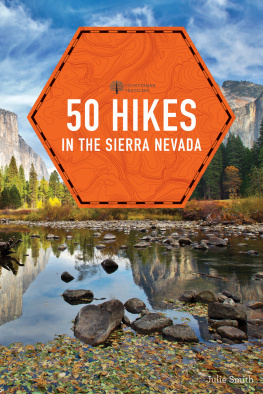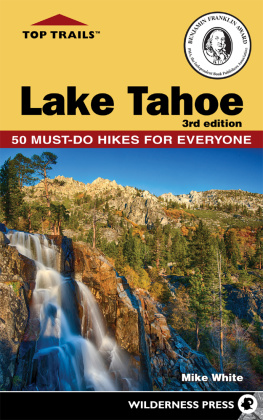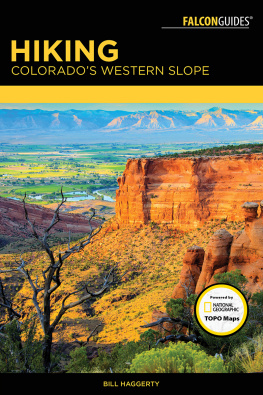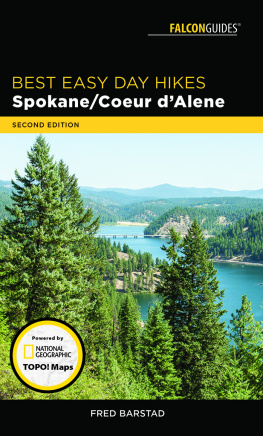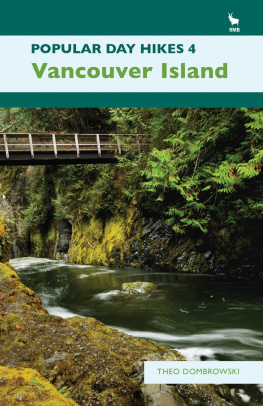Contents
Guide

OTHER BOOKS IN THE 50 HIKES SERIES
50 Hikes in Michigan & Wisconsins North Country Trail
50 Hikes in the North Georgia Mountains
50 Hikes in Northern New Mexico
50 Hikes in Ohio
50 Hikes in Orange County
50 Hikes in the Ozarks
50 Hikes in South Carolina
50 Hikes in the Upper Hudson Valley
50 Hikes in Wisconsin
50 Hikes in the Berkshire Hills
50 Hikes in Alaskas Kenai Peninsula
50 Hikes in Coastal and Inland Maine
50 Hikes in Kentucky
50 Hikes in the Catskills

AN INVITATION TO THE READER
Over time trails can be rerouted and signs and landmarks altered. If you find that changes have occurred on the routes described in this book, please let us know so that corrections may be made in future editions. The author and publisher also welcome other comments and suggestions. Address all correspondence to:
Editor, 50 Hikes Series
The Countryman Press
500 Fifth Avenue
New York, NY 10110
All photos by the author unless otherwise indicated.
Copyright 2009, 2019 by The Countryman Press
All rights reserved
For information about permission to reproduce selections from this book, write to Permissions, The Countryman Press, 500 Fifth Avenue, New York, NY 10110
For information about special discounts for bulk purchases, please contact
W. W. Norton Special Sales at specialsales@wwnorton.com or 800-233-4830
Book design by Chris Welch
Production manager: Lauren Abbate
The Countryman Press
www.countrymanpress.com
A division of W. W. Norton & Company, Inc.
500 Fifth Avenue, New York, NY 10110
www.wwnorton.com
Library of Congress Cataloging-in-Publication Data is available
978-1-68268-293-7 (pbk.)
978-1-68268-294-4 (ebk.)
For my mom and dad, for showing me that some of the best paths in life are dirt.
Climb the mountains and get their good tidings. Natures peace will flow into you as sunshine flows into trees. The winds will blow their own freshness into you, and the storms their energy, while cares will drop off like autumn leaves.
John Muir


Contents

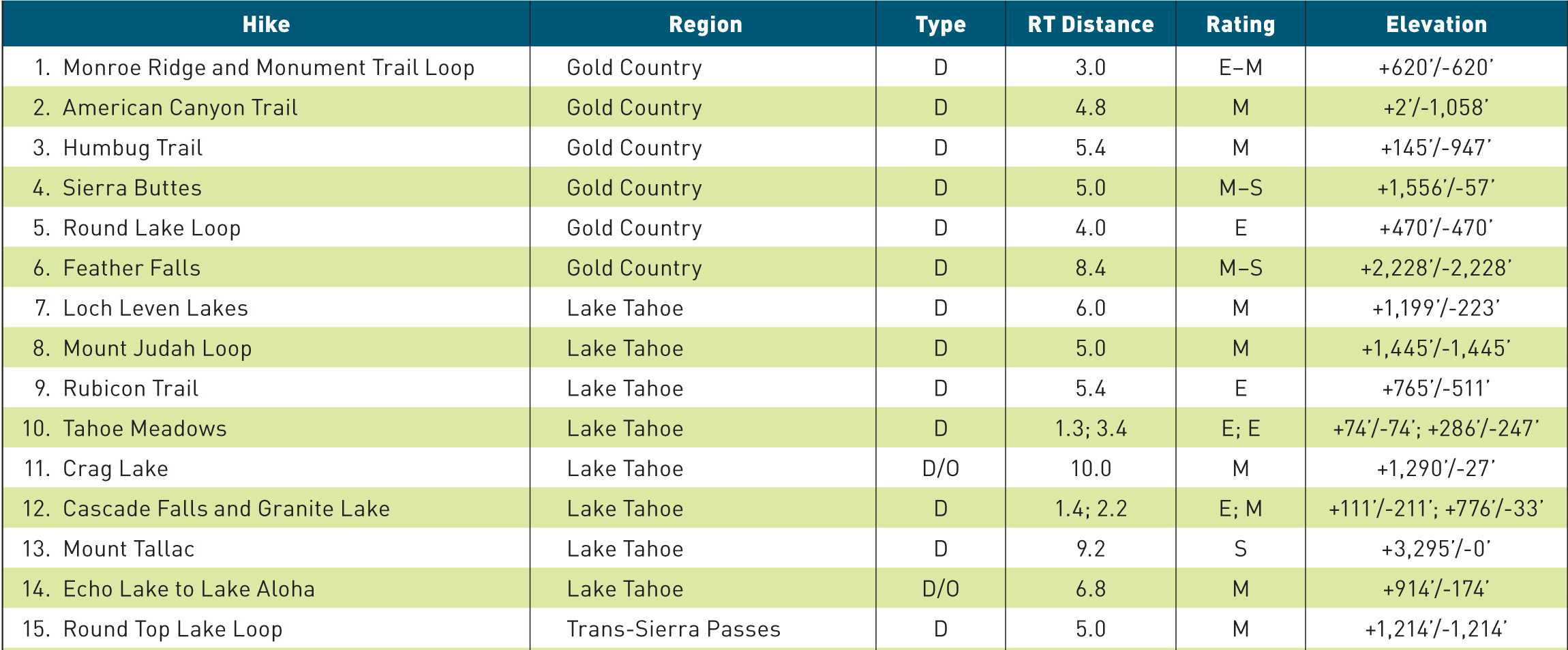
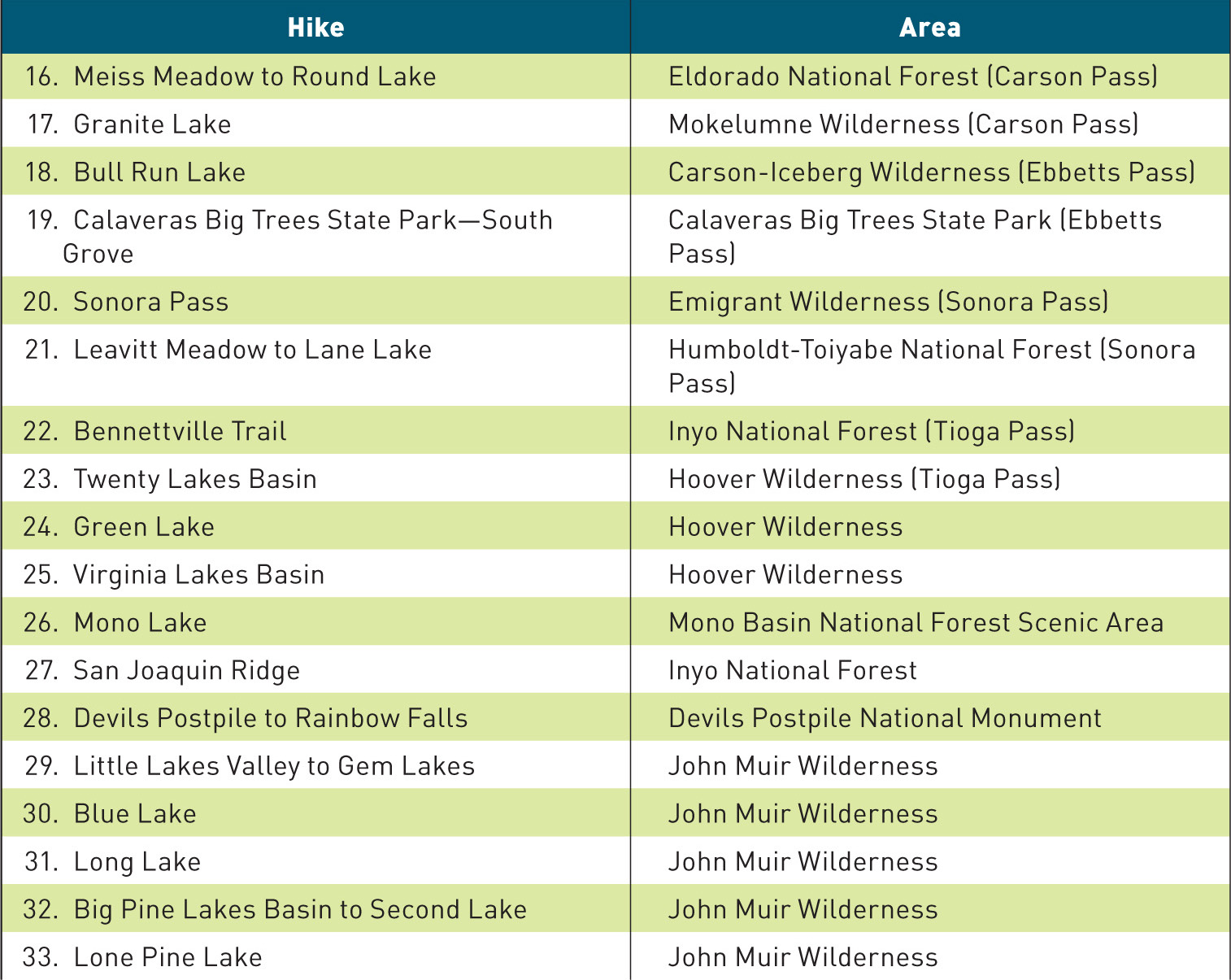
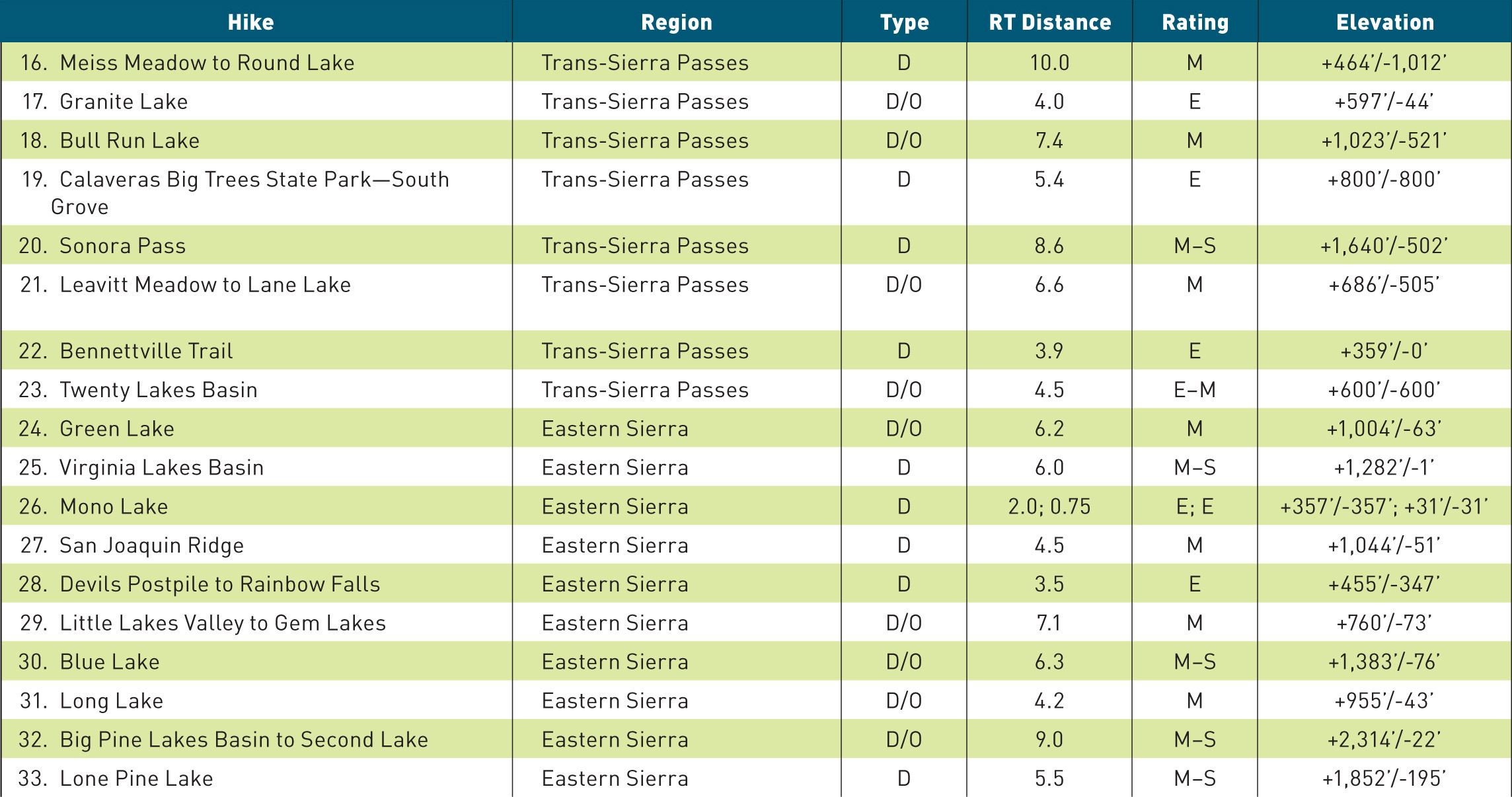

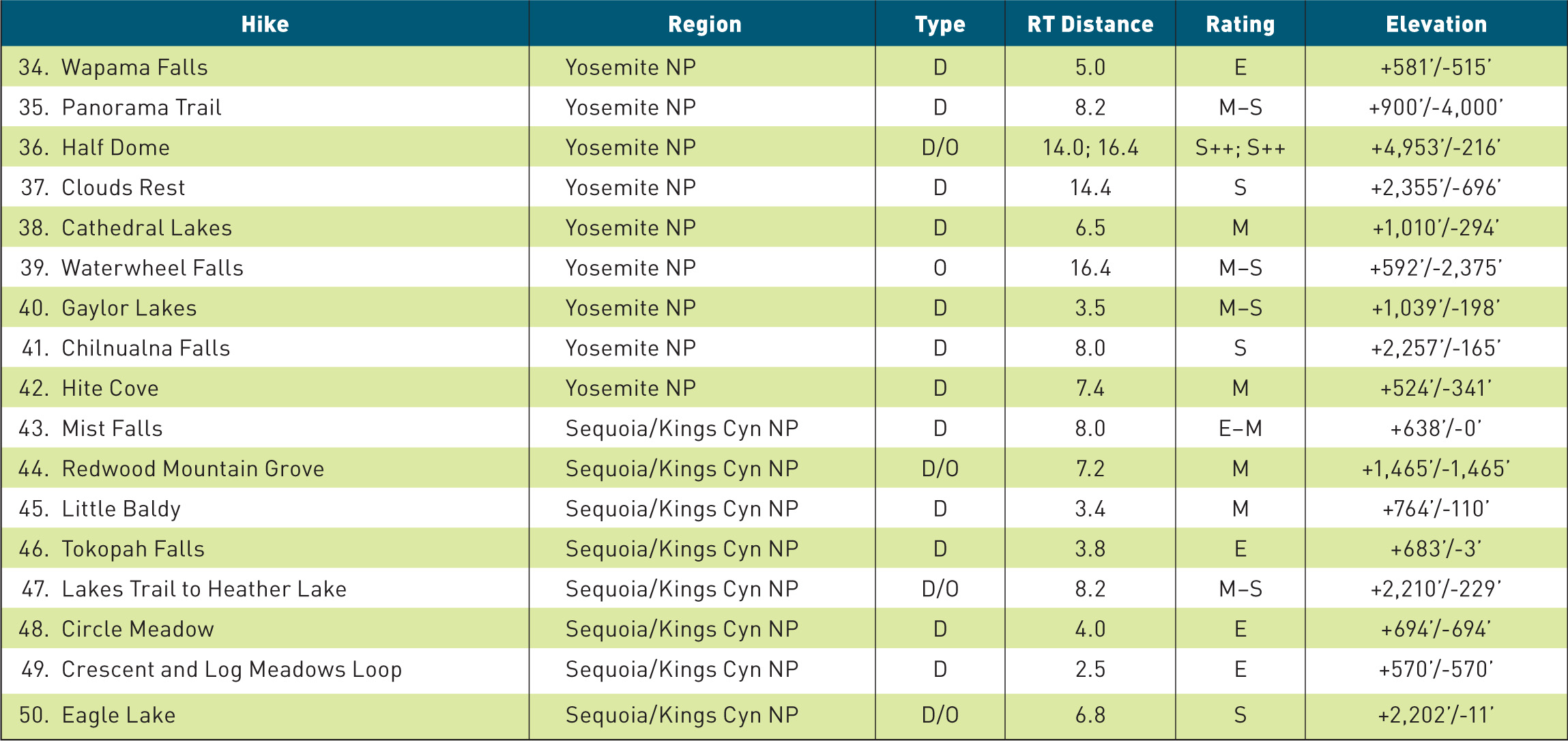
HIKE RATING KEY
E: | Easy |
M: | Medium |
S: | Strenuous |
T hanks to everyone that helped make the second edition of this guide a reality. Thanks to all the park rangers who offered their insight, answered my endless questions, and pointed me in the right direction. Thanks to my Cardno family for allowing me to escape the insanity for a bit to focus on this revision and for helping me identify some tricky flora and fauna. A big thanks to W. W. Norton for inviting me to work on a second edition and to the editorial staff that truly do all the heavy lifting. Thank you to my parents for introducing me to natures magnificence and for their constant support along all the trails of my life. Last, but most certainly not least, thanks to my husband Richard for supporting me in this endeavor and being my companion on practically every hike in this book. Some of my most treasured memories were born on these hikes. Hopefully, readers will make a few of their own.
F rom a skyline of serrated granite to a delicate carpet of spring wildflowers, the Sierra Nevada is a range of sensory extremes. It is a dramatic medley of sharp edges, rough textures, and fragile biota that forms some of the most sublime landscapes in the world.
The Sierra is a perpetually evolving natural masterpiece filled with boundless perspectives. Whether youre perched atop Mount Whitney with an ocean of snow-capped spires lapping against your feet or spying a black bear and her cub saunter across a blossoming meadow, each vantage has its own intoxicating panorama.
The Sierra Nevada is the longest single mountain range in the contiguous United States. This prominent geographic feature runs almost entirely within the eastern portion of California, briefly spilling into Nevada near Lake Tahoe. The range contains the deepest lake, the tallest waterfall, the largest living tree, the deepest gorge, and the highest mountain in the continental United States.
The oak woodland-covered foothills of the western Sierra, beginning around 1,000 feet in elevation, give way to mixed conifer forests and pine stands, ultimately culminating at stark, treeless mountaintops above 14,000 feet, where little will grow but lichen and moss. This wide range of elevation, climate, and topography results in a remarkable diversity of flora and fauna. Climbing the Sierra Nevada is comparable to making a trip from the deserts of the southwestern United States to arctic Canadaeach 1,000 feet of elevation gain roughly corresponding to traveling 300 miles northward. Each dramatic shift in elevation includes a different set of denizens, all adapted to their specific niches.
The cultural history of the Sierra Nevada has transitioned from peaceful coexistence with early Native American inhabitants, to deleterious mining, logging, and grazing by European-American settlers, to a conservation movement spearheaded by naturalist John Muir. Through his writing and political activism, he became a pivotal figure in preserving the integrity of the Sierra and the creation of our national parks system.
Today, much of the Sierra Nevada is maintained as a patchwork of federal- or state-designated parks, forests, monuments, and wilderness areas. Most notably, Yosemite, Sequoia, and Kings Canyon National Parks are found tucked amid the ranges rock outcroppings and forested slopes.
The most intimate way to experience this vast range is under your own power. The Sierra is crisscrossed by an extensive trail networkfrom sections of the rugged, 2,650-mile Pacific Crest Trail (PCT) to paved interpretive nature walks and everything in between. Choosing 50 hikes was challenging, but I think you will find this book includes a pleasant mix of classic Sierra treks and lesser-known, less-frequented gems just waiting for you to explore.
As you roam the Sierra trails, whether you find yourself on a remote ridge of the Mokelumne Wilderness or on a bustling trail in Yosemite Valley, be in awelisten to the trees, touch the polished granite, fill your lungs with sweet mountain air, watch a butterfly dance. Most important, be present in that moment amid Natures brilliance and know what it means to be home.
GEOGRAPHY
The Sierra Nevada, Spanish for snowy mountain range, stretches more than 400 miles from the southern edge of the Cascade Range in northern California to Tehachapi Pass. Spanning between 40 and 80 miles wide, the Sierra is bounded by the Central Valley to the west and the Great Basin to the east.

